| Year | 2014 |
| Credits | Mook Attakanwong(Featured) Garment Designer Ben SimonsTech LeadCircular Dolly Rig Design & Production, Lighting Design, Photogrammetry R&D Darren LeeVisualisation ProgrammerPhotogrammetry Capture & Processing Scarlett SmoutFashion CoordinatorMannequin Dressing, Fashion Garment Styling |
| 3D Stereo | Yes |
| Tags | fashion photogrammetry |
Fashion Turntable
Load geometry and explore it in 3D space. In this project, we were interested in 3D scanning textile materials close enough to see stitching and individual threads. This featured garment by Mook Attakanwong is one of 25 models.
To access the demo, download the Data Arena Virtual Machine.
Background
As a part of their final year project UTS fashion students are required to make 5 garments. This includes making their own materials and textiles for the garments and then showcasing them on a runway.
All textiles were scanned as well as the garment itself. The fashion garment was placed on a mannequin. 300 photographs were then taken from different angles around the garment.
Pairs of Cameras
Pairs of DSLR Cameras were rigged (see right) side-by-side to capture "image pairs"; two similar photographs. Features from each photo are compared. The slight differences recorded. Based on these distances, and the known characteristics of the camera lens, the position of each feature is determined as a point in 3D space. A 3D point cloud is created.
Neighbouring points in the 3D cloud are connected by edges to form triangles. This forms a triangular mesh surface model. We have a 3D triangle model of the garment. To colour the triangles the same photos are then re-projected (texture-mapped) onto the surface from the same original angle to produce the real-looking 3D model. The apparent detail comes from the hirez photos, not the geometry which is fairly low resolution.
The 3D model was obtained by using Photoscan by Agisoft, which was fairly new in 2014. These days there are many ways to obtain a 3D model from a sequence of images.
We experimented with various camera separation distances (14cm to 130cm), as shown in the video below. This is the gap between the pair of cameras. 14cm was the closest we could mount them turned 90-degrees side-by-side in portrait mode. We found there was a sweet-spot for the separation which best handled cloth materials with many folds. Generally, the greater the camera separation the lower the ability to match features in the pictures from the two cameras.
Number of matching feature points vs. camera separation distance (cm)
The photogrammetry rig
This project was made possible through the construction of a 3D camera rig, comprising left and right side cameras to create a stereo image. The Data Arena team made an excursion to Bunnings (a local hardware store). We bought garden hoses and shopping trolley wheels to construct the camera rig.
The garden hoses were placed in two concentric circles on the ground. They're used as guide rails for the wheels which were attached to the camera rig. Two wheels are held between the hoses. The "circular dolly" rig was used to photograph the dress. Features from the digital photos were compared on computer to create a 3D point cloud. These points are then stitched together on a computer using photogrammetry software. The photos are then projected back onto the wireframe surface model to achieve the result seen on screen.
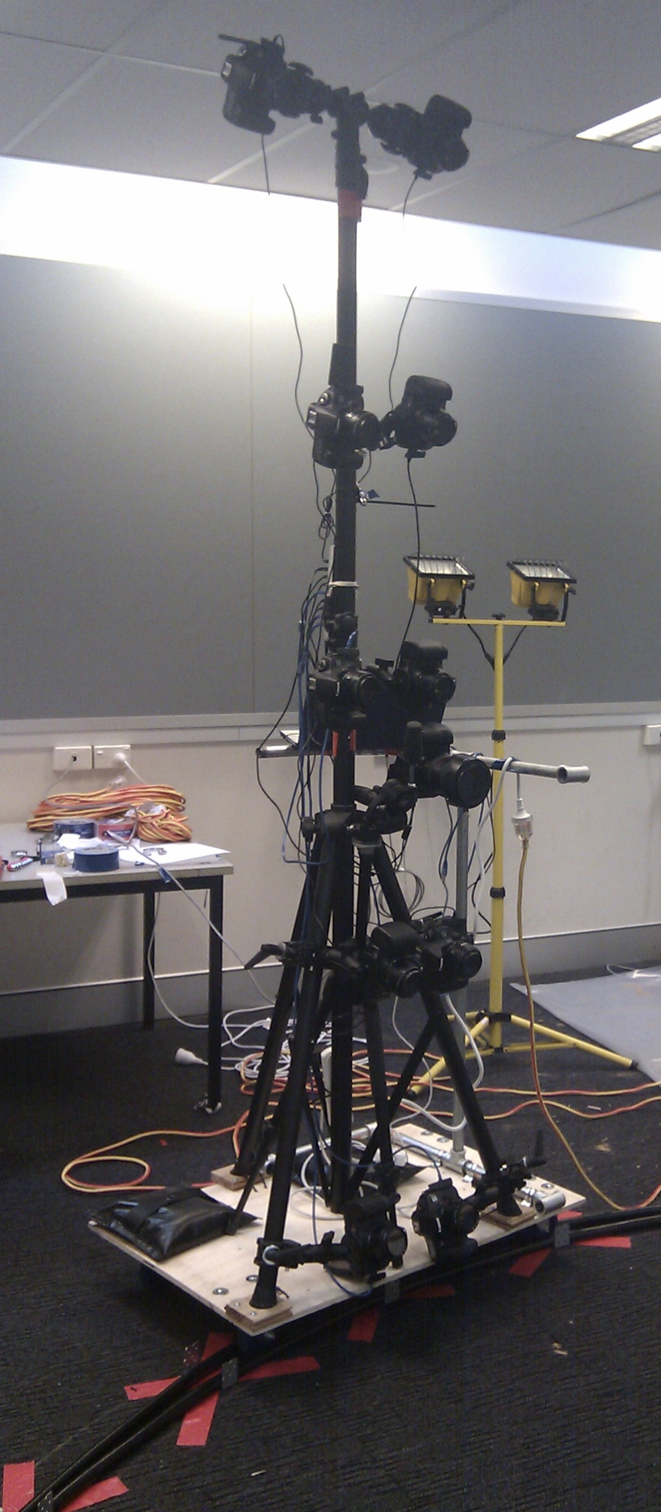

Data Arena's Custom 360-degree Circular Dolly Camera Rig. 13 DSLR Cameras. Note arrangement of lights (yellow rig) set to bounce light off ceiling - diffuse lighting reduces specular highlights on garments being scanned.
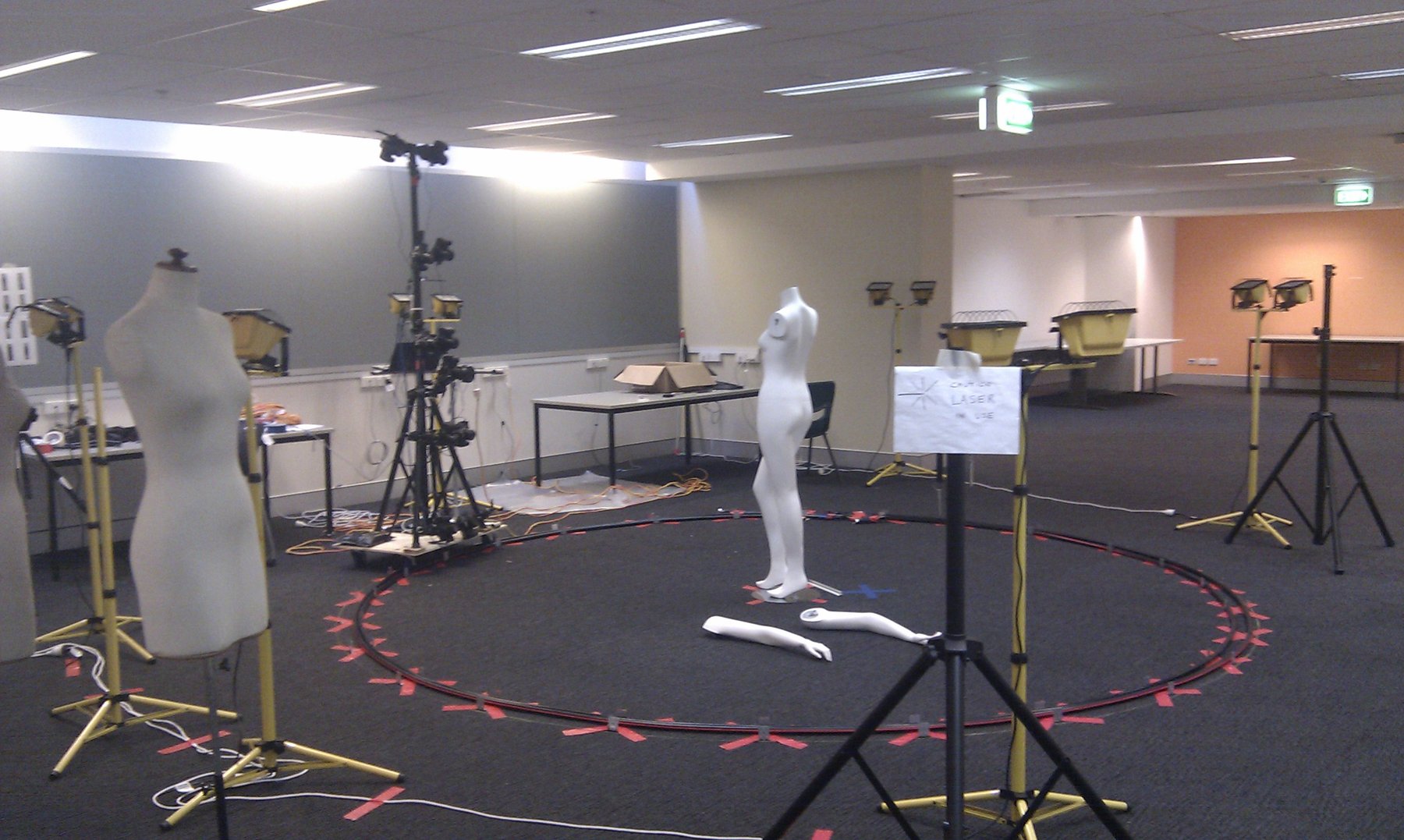

A wider-view of the circular dolly rig built to scan the 25 Fashion Garments, back in 2014. The camera rig orbits the mannequin. A dozen pictures were taken at each stop. This produces approximately 300 photos from which a 3D model is built. By moving the camera instead of turning the model, the lighting on the garment remains consistent, and there's less risk the fabric will move.
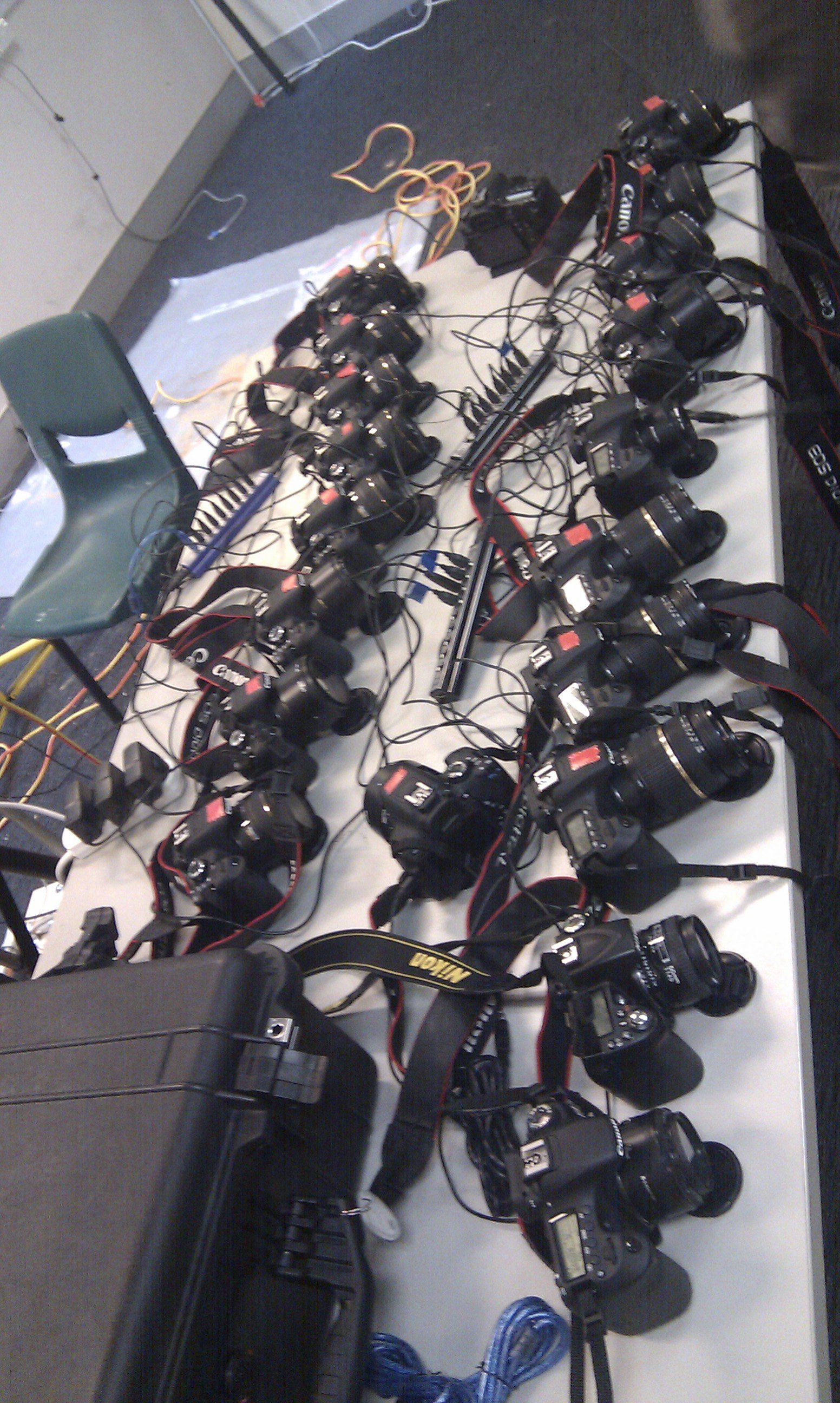

The DSLR cameras on loan, each connected by USB for remote control
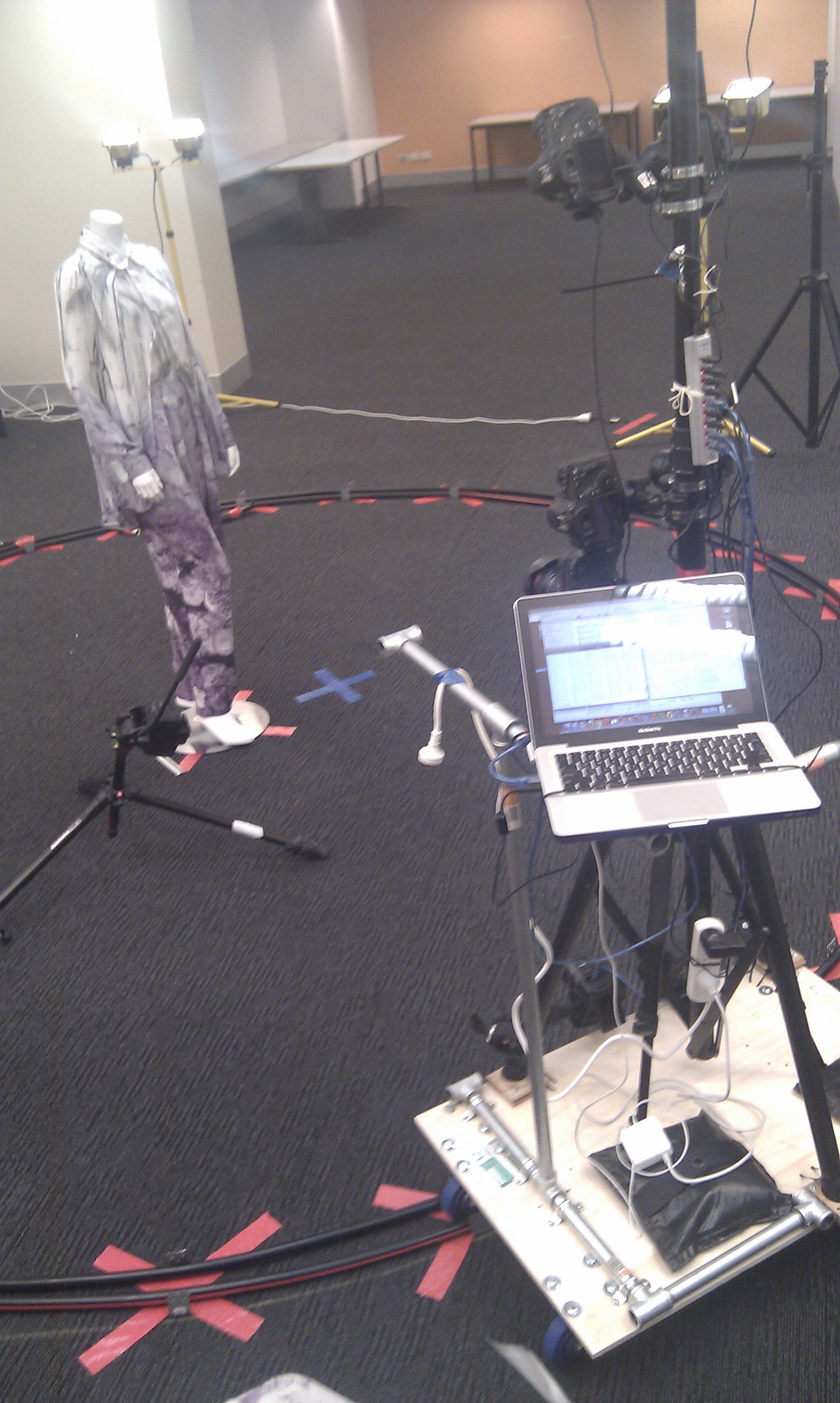

Mid-shot of the circular dolly rig, with controlling laptop gaff- taped to rig.
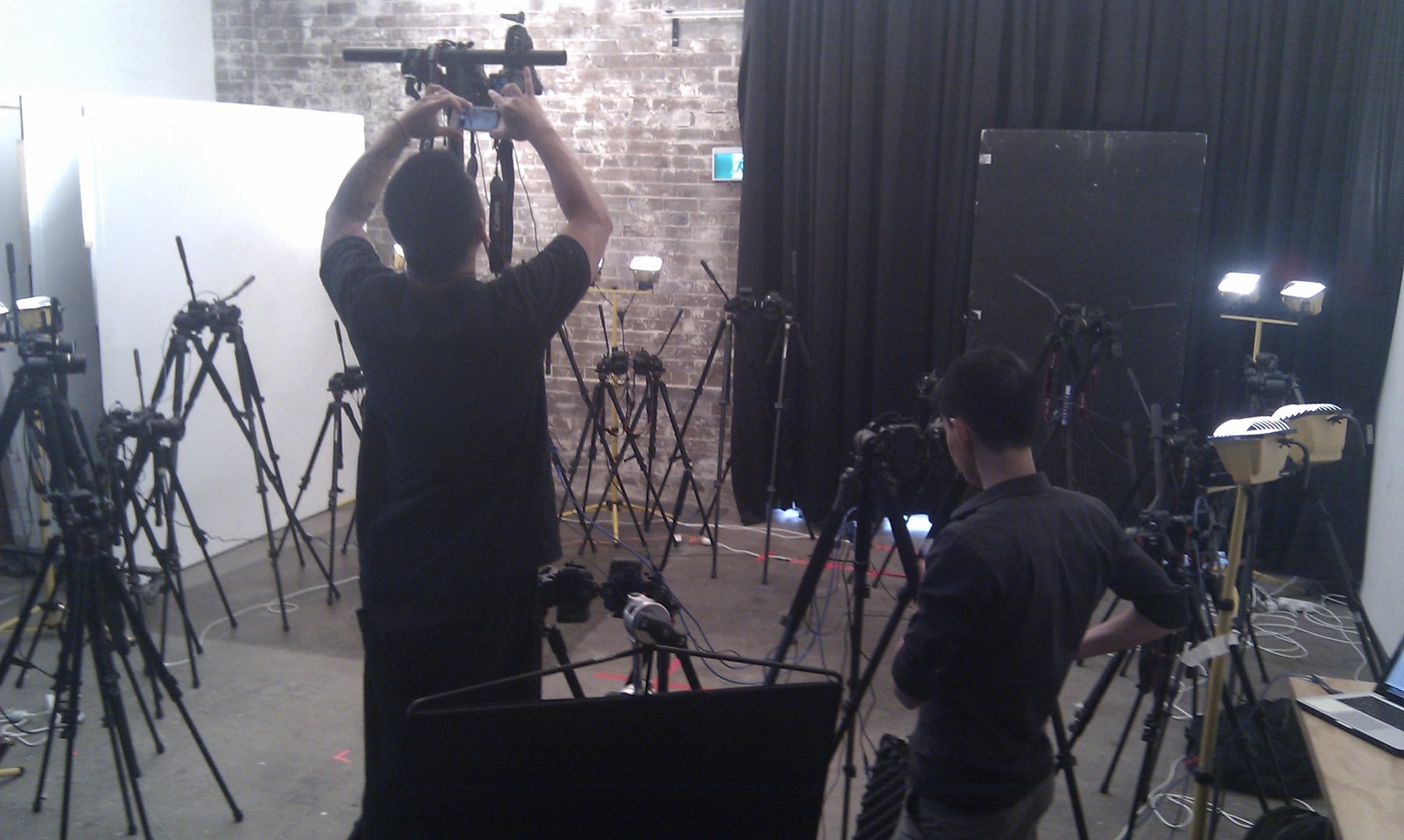

On-set at Sun Studios Alexandria, we also experimented with a "single shot" ring of camera pairs - with the idea to capture a dressed model in 3D post shoot. All 32 cameras triggered at the same time. Photos remain on internal storage, to be individually downloaded in Post. The 3D reconstruction for these images were not as good as those taken with the circular dolly. More photos provides a more accurate mesh, with less gaps.